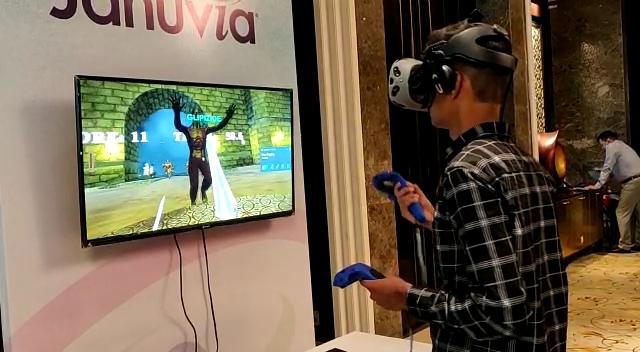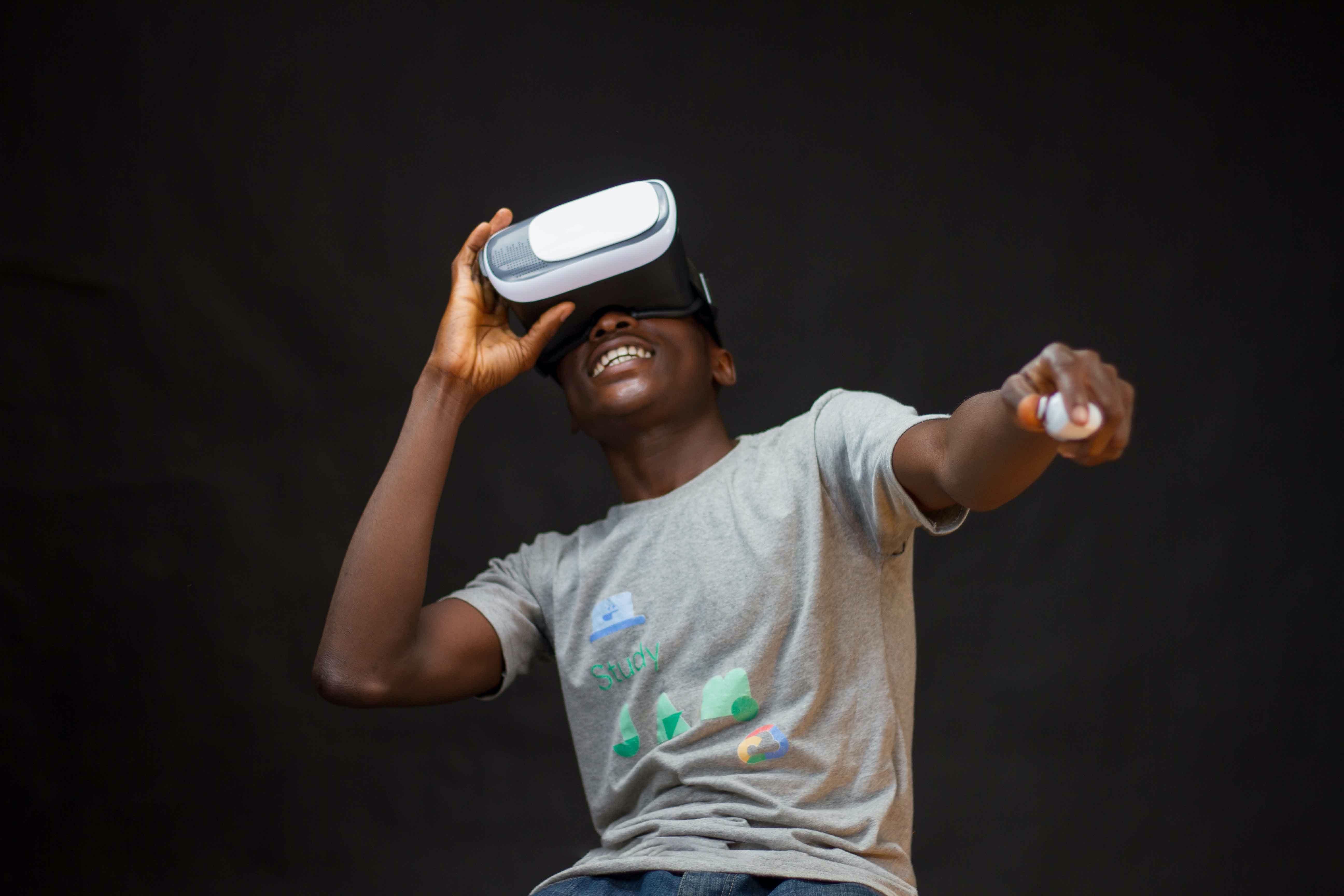Benefits of using AR and VR for sales and marketing
January 3, 2023Top 10 Reasons to use Augmented Reality and Virtual Reality for sales and marketing
Augmented Reality (AR) and Virtual Reality (VR) can provide a range of benefits for sales and marketing by enhancing product demonstrations, increasing engagement, improving the customer experience, and increasing conversion rates. These technologies can also improve brand awareness, increase customer loyalty, enhance product design, increase efficiency, expand reach, and position a company as forward-thinking and innovative. By using AR and VR, companies can provide a more immersive and interactive experience for customers, leading to increased interest in and awareness of a product or brand.


Benefits of using AR and VR for sales and marketing:
Enhanced Product Demonstrations: AR and VR can provide a more immersive and interactive experience for demonstrating products, allowing customers to see and interact with them in a virtual environment. This can be especially useful for products that are difficult to demonstrate in person, such as large or complex machinery. By using AR or VR, customers can get a better understanding of how a product works and what it is capable of, which can increase their interest and confidence in the product.
Increased Engagement: AR and VR can engage customers in a way that traditional marketing methods cannot, providing a more interactive and personalized experience. This can lead to increased interest in and awareness of a product or brand. By using AR or VR, customers can actively participate in the marketing experience and feel more connected to the product or brand.
Improved Customer Experience: AR and VR can provide a more seamless and enjoyable shopping experience, allowing customers to try on clothes, visualize products in their own space, and access information about products in an interactive way. This can make the shopping process more efficient and convenient for customers, leading to a better overall experience.
Increased Conversion Rates: Studies have shown that the use of AR and VR can lead to increased conversion rates, as customers are more likely to purchase a product after experiencing it in a virtual environment. By providing a more immersive and interactive experience, AR and VR can increase customer interest and confidence in a product, leading to higher conversion rates.
Improved Brand Awareness: AR and VR can help a brand stand out and be memorable, providing a unique and innovative experience that can differentiate it from competitors. By using AR or VR, a brand can showcase its products in a way that is attention-grabbing and memorable, leading to increased brand awareness.
Increased Customer Loyalty: The personalized and immersive experience provided by AR and VR can foster a sense of customer loyalty and encourage repeat business. By providing a unique and engaging experience, AR and VR can create a positive association with a brand, leading to increased customer loyalty.
Enhanced Product Design: AR and VR can be used to design and test products in a virtual environment, allowing for faster and more cost-effective product development. By using AR or VR, product designers can visualize and test products in a virtual environment, leading to more efficient and cost-effective product development.
Increased Efficiency: AR and VR can streamline sales and marketing processes, allowing for more efficient communication and presentation of products to customers. By using AR or VR, sales and marketing teams can present products to customers in a more interactive and efficient way, leading to increased productivity and efficiency.
Greater Reach: AR and VR can be accessed from anywhere, providing a global reach and the ability to reach customers in remote locations. By using AR or VR, a company can reach a wider audience and provide a more immersive experience to customers in remote locations.
Future-Proofing: The use of AR and VR in sales and marketing can position a company as forward-thinking and innovative, positioning it well for the future as these technologies continue to advance. By adopting AR and VR early, a company can establish itself as a leader in the use of these technologies, positioning it well for future success.
Overall, the use of AR and VR in sales and marketing can provide a more engaging, immersive, and personalized experience for customers, leading to increased conversion rates, brand awareness, and customer loyalty.
How Brands can use AR and VR for sales and Marketing
There are many ways that brands can use Augmented Reality (AR) and Virtual Reality (VR) for marketing:
Product demonstrations: Brands can use AR and VR to provide immersive and interactive product demonstrations to customers, allowing them to see and interact with products in a virtual environment.
Virtual try-on: Brands can use AR to allow customers to virtually try on clothes and accessories, providing a more convenient and personalized shopping experience.
Virtual showrooms: Brands can use VR to create virtual showrooms where customers can browse and interact with products in a virtual environment.
Virtual events: Brands can use VR to host virtual events and experiences, such as product launches, fashion shows, and conferences.
Interactive ads: Brands can use AR to create interactive ads that allow customers to interact with products and access information about them in an engaging way.
Interactive packaging: Brands can use AR to create interactive packaging that allows customers to access information about products and engage with them in a unique way.
Virtual reality training: Brands can use VR to train employees and customers, providing a more immersive and interactive learning experience.
Virtual reality customer service: Brands can use VR to provide customer service and support, allowing customers to interact with virtual representatives in a personalized way.
Overall, there are many ways that brands can use AR and VR to create immersive and interactive marketing experiences that engage and educate customers, leading to increased interest in and awareness of a brand.
Conclusion
In conclusion, Augmented Reality (AR) and Virtual Reality (VR) can provide a range of benefits for sales and marketing by enhancing product demonstrations, increasing engagement, improving the customer experience, and increasing conversion rates. These technologies can also improve brand awareness, increase customer loyalty, enhance product design, increase efficiency, expand reach, and position a company as forward-thinking and innovative. By using AR and VR, companies can provide a more immersive and interactive experience for customers, leading to increased interest in and awareness of a product or brand. Brands can use AR and VR for marketing in a variety of ways, including product demonstrations, virtual try-on, virtual showrooms, virtual events, interactive ads, interactive packaging, virtual reality training, and virtual reality customer service. Overall, the use of AR and VR in sales and marketing can provide a unique and innovative way to engage and educate customers, leading to increased brand awareness and customer loyalty.
Here is an example of how Augmented Reality and Virtual Reality are being used in brand activation for maximum customer attention and how this is benefiting brands to establish their goodwill in the market.
Augmented Reality
Virtual Reality
Getting yourself into a big virtual cricket field is what can attract a lot more people towards the product or services, where a player’s photo is clicked over a chroma screen to get his/her face into a game where he/she can respond to a virtual power by the use of physical bat provided to them. Every shot played can get them higher on a leaderboard or can help them to win a prize. Zeal Interactive Services is a technology-oriented organization dedicated to the creation of high-level though cost-effective services in the field of experiential marketing and zones.

